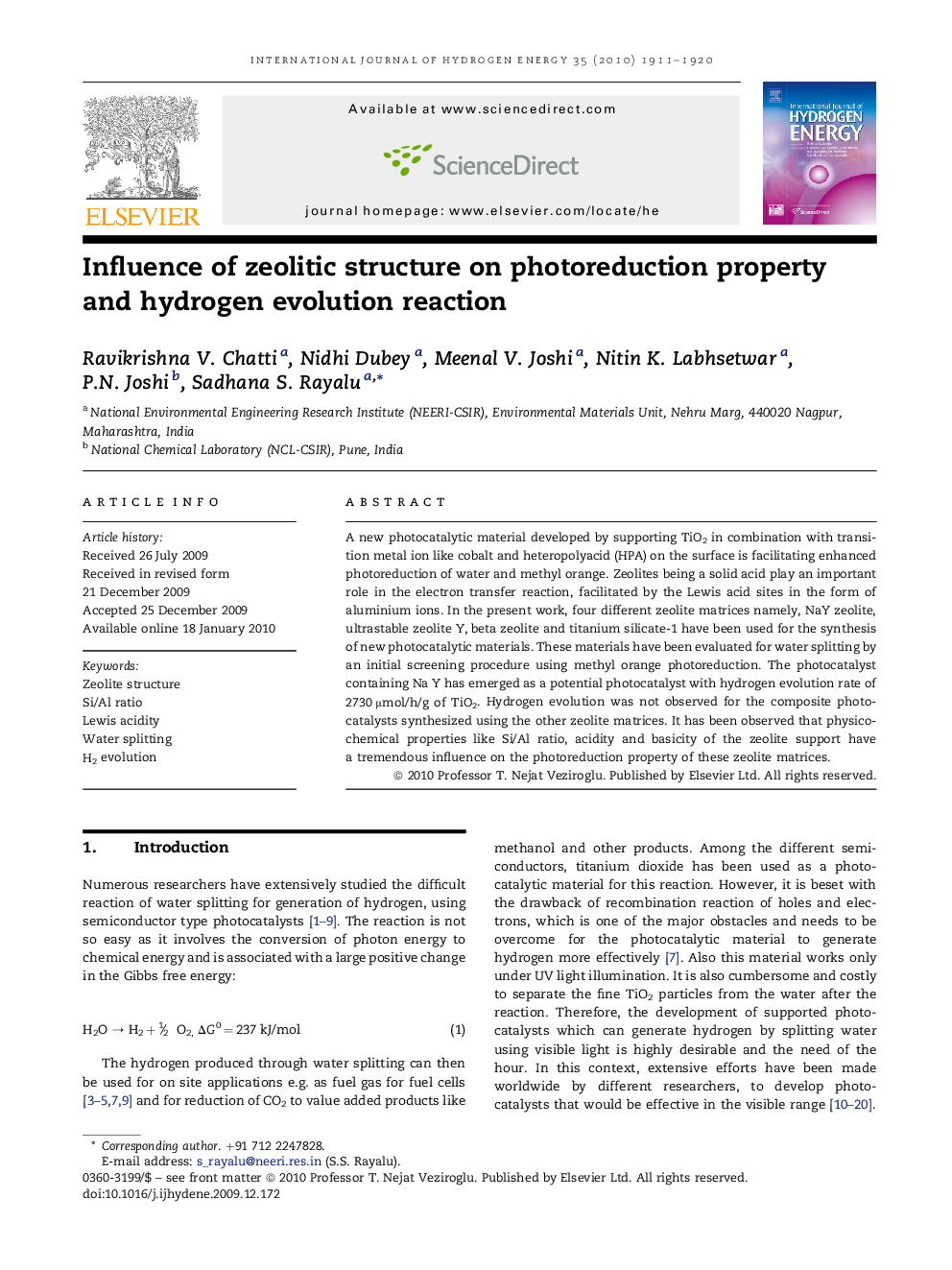| Article ID | Journal | Published Year | Pages | File Type |
|---|---|---|---|---|
| 1280897 | International Journal of Hydrogen Energy | 2010 | 10 Pages |
A new photocatalytic material developed by supporting TiO2 in combination with transition metal ion like cobalt and heteropolyacid (HPA) on the surface is facilitating enhanced photoreduction of water and methyl orange. Zeolites being a solid acid play an important role in the electron transfer reaction, facilitated by the Lewis acid sites in the form of aluminium ions. In the present work, four different zeolite matrices namely, NaY zeolite, ultrastable zeolite Y, beta zeolite and titanium silicate-1 have been used for the synthesis of new photocatalytic materials. These materials have been evaluated for water splitting by an initial screening procedure using methyl orange photoreduction. The photocatalyst containing Na Y has emerged as a potential photocatalyst with hydrogen evolution rate of 2730 μmol/h/g of TiO2. Hydrogen evolution was not observed for the composite photocatalysts synthesized using the other zeolite matrices. It has been observed that physico-chemical properties like Si/Al ratio, acidity and basicity of the zeolite support have a tremendous influence on the photoreduction property of these zeolite matrices.
